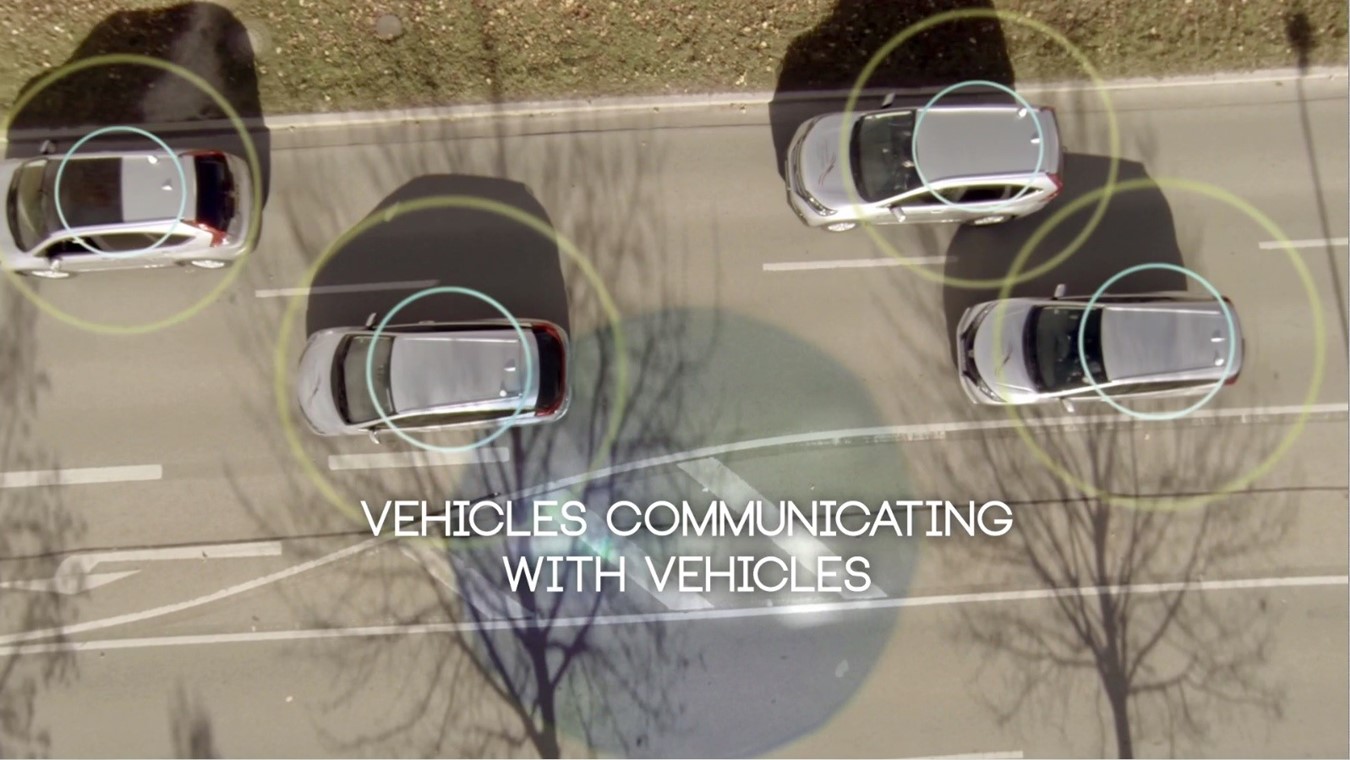Honda Powers Pioneering 'Communicating Cars' Tour Showcasing a Future of Intelligent Traffic Systems

Five Honda cars have recently returned from a pioneering tour to demonstrate and increase awareness of the benefits of Intelligent Traffic Systems (ITS) in improving road safety and reducing congestion across Europe.
The ‘Communicating Cars’ tour is the latest step towards creating an ‘ITS corridor’ between The Netherlands, Germany and Austria, following an agreement between the three countries signed in 2013. In an unprecedented cross-border cooperation between governments, motorway operators and the automotive industry, the ultimate aim is to create a fully integrated intelligent traffic control system on a 1300km stretch of road across the three countries, using the latest V2X (Vehicle-to- Vehicle and Vehicle-to-Infrastructure) technologies.
The five V2X-equipped Honda Civic Tourers and CR-Vs set out from the Electronica trade show in Munich on Monday 11th November, moving on to Vienna and Frankfurt; giving demonstrations of the technology to media, the public and industry figures along the way. The tour concluded in Helmond on Wednesday November 19th, where the Dutch Minister of Traffic and other government representatives hosted a closing conference to summarise the achievements of the initiative and to discuss road safety issues with leading companies and automotive groups.
The Communicating Cars tour was initiated by NSX Semiconductors, a leader in the field of V2X technologies, which provided chipsets including software and hardware security features for the participating cars. Siemens was also recruited as a partner to supply and fit road signs, traffic lights and road obstacles with V2X radio sensors.
The aim of the tour was to demonstrate that V2X technology is ready for mass market deployment, with the objective of accelerating its roll-out by allowing people to experience its many benefits in a real-life environment, and promoting the industry and government support behind its adoption.
Direct communication with other V2X-capable vehicles and intelligent infrastructure gives drivers advanced warning of upcoming hazards, dangerous road conditions, unexpected traffic jams, approaching ambulances or road works, long before these hazards enter their field of vision. V2X-capable vehicles also receive information from intelligent road signs and automatically recognise the operating cycle of traffic lights before they reach them. Additionally, V2X communication is not reliant on mobile communication or other networks, which can be slow or unstable, but rather on the communication standard IEEE 802.11p, which is specifically tailored to meet the needs of the automotive industry.
Sven Leonhardt, Department Manager for Functions and Material Technologies at Honda R&D Europe commented: “The increasing deployment of intelligent transportation systems provides excellent potential for road safety and traffic efficiency. Our involvement in this initiative demonstrates that this technology is fully functional. Honda’s vision of ‘Safety for Everyone’ is becoming a reality”.
Kurt Sievers, Executive Vice President & General Manager Automotive Business NXP Germany GmbH commented: “With the Communicating Cars initiative we can, for the first time ever, demonstrate directly on the roads of Europe that V2X technology is mature, reliable and ready to improve traffic flow and road safety. In cooperation with Siemens and the other partners of the Communicating Cars initiative, we want to build confidence in the new technology and give a boost to this sustainable development to massively improve traffic safety.”
The cooperative agreement to develop the ITS corridor between The Netherlands, Germany and Austria was partly based on research by the Centre for Economics and Business Research (Cebr) and the European Commission, concluding that thousands of road deaths could be avoided every year with the aid of Intelligent Traffic Systems. Such systems would also help to minimise the environmental damage and economic loss caused by traffic jams, estimated to cost Europe around €7.4 billion in 2013 alone.


